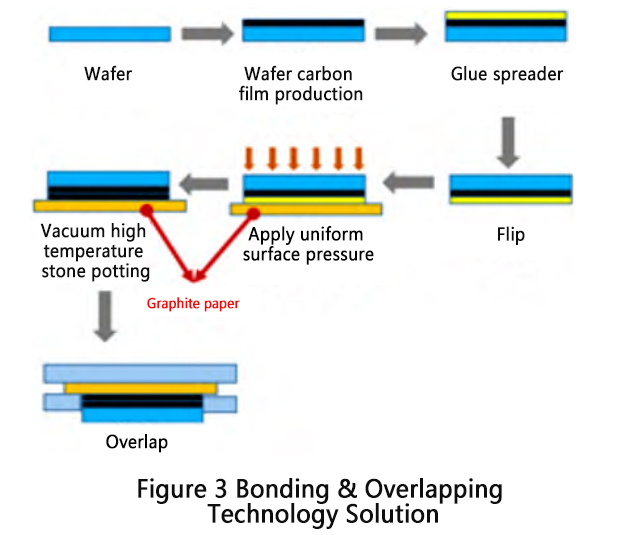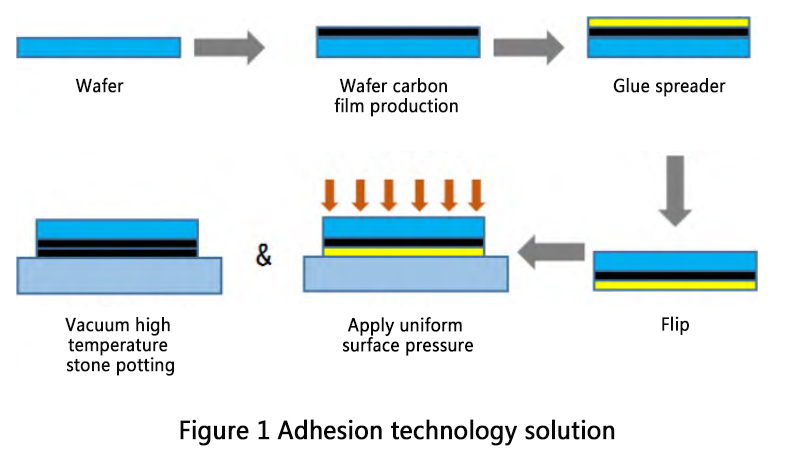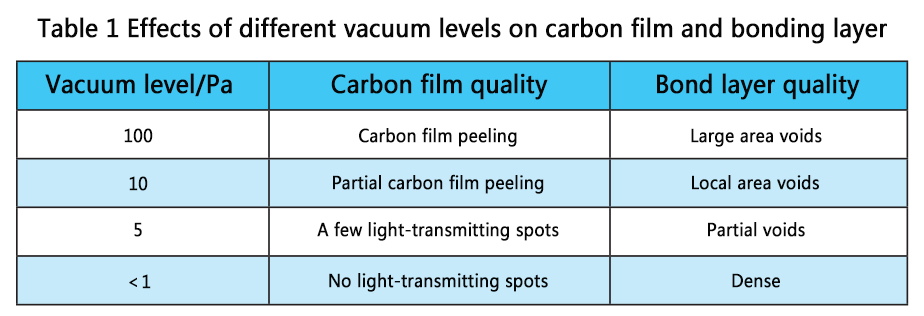Silicon carbide (SiC) material has the advantages of a wide bandgap, high thermal conductivity, high critical breakdown field strength, and high saturated electron drift velocity, making it highly promising in the semiconductor manufacturing field. SiC single crystals are generally produced through the physical vapor transport (PVT) method. The specific steps of this method involve placing SiC powder at the bottom of a graphite crucible and placing an SiC seed crystal at the top of the crucible. The graphite crucible is heated to the sublimation temperature of SiC, causing the SiC powder to decompose into vapor phase substances such as Si vapor, Si2C, and SiC2. Under the influence of the axial temperature gradient, these vaporized substances sublimate to the top of the crucible and condense on the surface of the SiC seed crystal, crystallizing into SiC single crystals.
Currently, the diameter of the seed crystal used in SiC single crystal growth needs to match the target crystal diameter. During growth, the seed crystal is fixed on the seed holder at the top of the crucible using adhesive. However, this method of fixing the seed crystal can lead to issues such as voids in the adhesive layer due to factors like the precision of the seed holder’s surface and the uniformity of the adhesive coating, which can result in hexagonal void defects. These include improving the flatness of the graphite plate, increasing the uniformity of the adhesive layer thickness, and adding a flexible buffer layer. Despite these efforts, there are still issues with the density of the adhesive layer, and there is a risk of seed crystal detachment. By adopting the method of bonding the wafer to graphite paper and overlapping it at the top of the crucible, the density of the adhesive layer can be improved, and the detachment of the wafer can be prevented.
1. Experimental Scheme:
The wafers used in the experiment are commercially available 6-inch N-type SiC wafers. Photoresist is applied using a spin coater. Adhesion is achieved using a self-developed seed hot-press furnace.
1.1 Seed Crystal Fixation Scheme:
Currently, the SiC seed crystal adhesion schemes can be divided into two categories: adhesive type and suspension type.
Adhesive Type Scheme (Figure 1): This involves bonding the SiC wafer to the graphite plate with a layer of graphite paper as a buffer layer to eliminate gaps between the SiC wafer and the graphite plate. In actual production, the bonding strength between the graphite paper and the graphite plate is weak, leading to frequent seed crystal detachment during the high-temperature growth process, resulting in growth failure.
Suspension Type Scheme (Figure 2): Typically, a dense carbon film is created on the bonding surface of the SiC wafer using glue carbonization or coating methods. The SiC wafer is then clamped between two graphite plates and placed at the top of the graphite crucible, ensuring stability while the carbon film protects the wafer. However, creating the carbon film through coating is costly and not suitable for industrial production. The glue carbonization method yields inconsistent carbon film quality, making it difficult to obtain a perfectly dense carbon film with strong adhesion. Additionally, clamping the graphite plates reduces the effective growth area of the wafer by blocking part of its surface.
Based on the above two schemes, a new adhesive and overlapping scheme is proposed (Figure 3):
A relatively dense carbon film is created on the bonding surface of the SiC wafer using the glue carbonization method, ensuring no large light leakage under illumination.
The SiC wafer covered with the carbon film is bonded to graphite paper, with the bonding surface being the carbon film side. The adhesive layer should appear uniformly black under light.
The graphite paper is clamped by graphite plates and suspended above the graphite crucible for crystal growth.

1.2 Adhesive:
The viscosity of the photoresist significantly affects the film thickness uniformity. At the same spin speed, lower viscosity results in thinner and more uniform adhesive films. Therefore, a low-viscosity photoresist is chosen within the application requirements.
During the experiment, it was found that the viscosity of the carbonizing adhesive affects the bonding strength between the carbon film and the wafer. High viscosity makes it difficult to apply uniformly using a spin coater, while low viscosity results in weak bonding strength, leading to carbon film cracking during subsequent bonding processes due to adhesive flow and external pressure. Through experimental research, the viscosity of the carbonizing adhesive was determined to be 100 mPa·s, and the bonding adhesive viscosity was set to 25 mPa·s.
1.3 Working Vacuum:
The process of creating the carbon film on the SiC wafer involves carbonizing the adhesive layer on the SiC wafer surface, which must be performed in a vacuum or argon-protected environment. Experimental results show that an argon-protected environment is more conducive to carbon film creation than a high vacuum environment. If a vacuum environment is used, the vacuum level should be ≤1 Pa.
The process of bonding the SiC seed crystal involves bonding the SiC wafer to the graphite plate/graphite paper. Considering the erosive effect of oxygen on graphite materials at high temperatures, this process needs to be conducted under vacuum conditions. The impact of different vacuum levels on the adhesive layer was studied. The experimental results are shown in Table 1. It can be seen that under low vacuum conditions, oxygen molecules in the air are not completely removed, leading to incomplete adhesive layers. When the vacuum level is below 10 Pa, the erosive effect of oxygen molecules on the adhesive layer is significantly reduced. When the vacuum level is below 1 Pa, the erosive effect is completely eliminated.
Post time: Jun-11-2024



